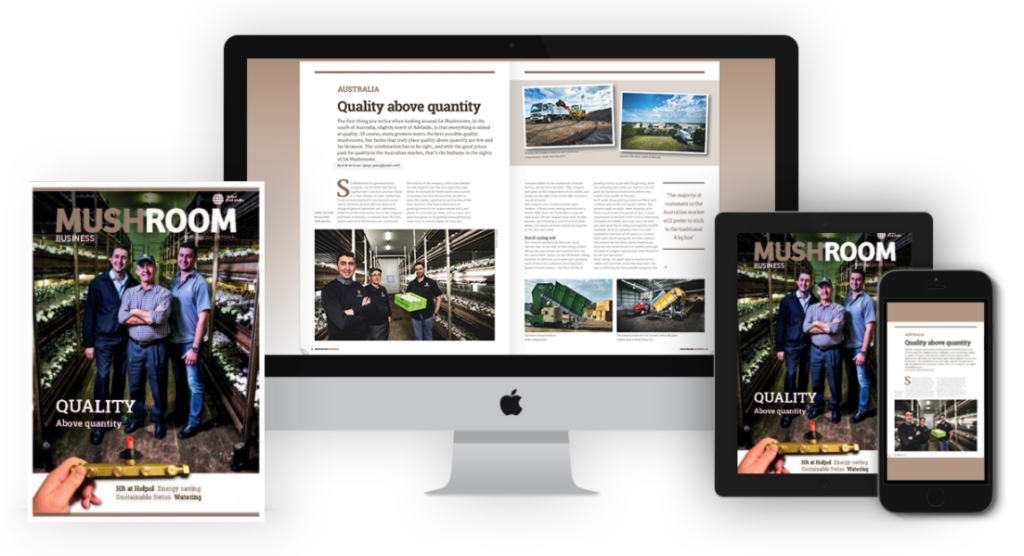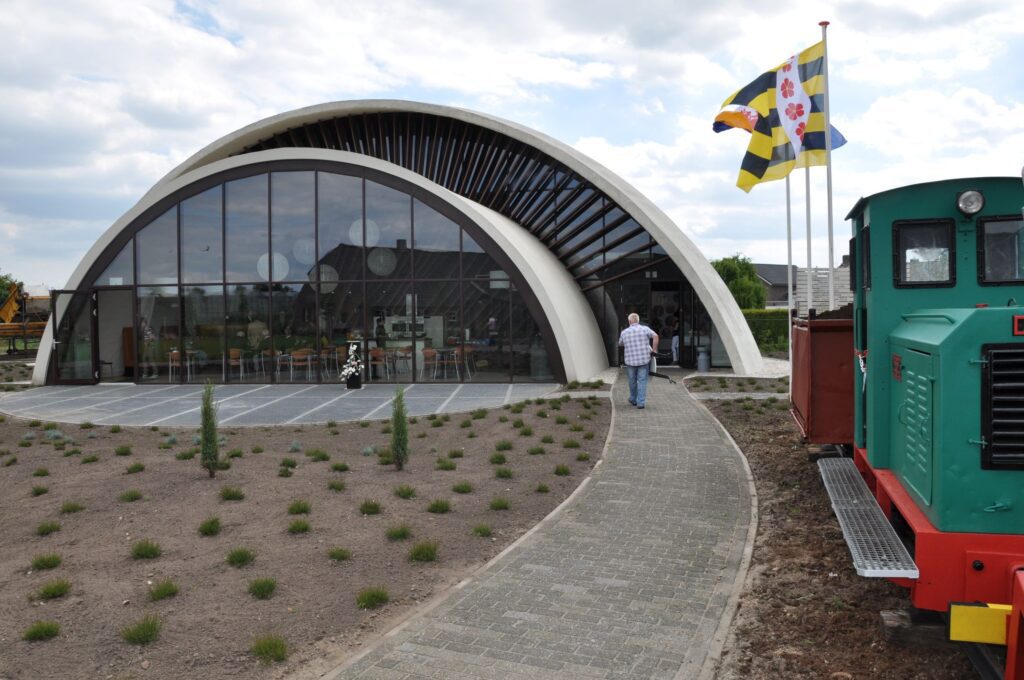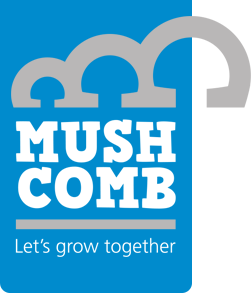Green mould occurs less frequently in the Netherlands thanks to the high levels of hygiene on composting and mushroom growing facilities, the use of incubated compost (phase III) and the constant conditions of compost preparation. However, completely eliminating the problem is impossible as incidental occurrences prove. In several other countries the aspects mentioned above are not as far advanced and problems associated with green mould are regularly encountered both on production farms and at compost producers.
The green moulds in mushroom growing are mainly Trichoderma types but Aspergillus and Penicillium types also occur.
Characteristic for the presence of green mould in compost is often the appearance of red pepper mites, huge rises in compost temperature, big differences between the compost temperature sensors, a stale smell in the compost and mould threads in the compost that are whiter than the mushroom mycelium or green spores. Green patches are often clearly seen on the casing soil and brown blotches appear on the mushrooms. The mushrooms show lesions on the stems and the stems are longer.
For disease control, the primary requirement is optimal hygiene on the farm and sound fly and midge prevention. Damage can also be limited using technical measures such as keeping the compost temperature below 25°C, not disinfecting the casing soil with formalin, infrequent spraying, preferably not spraying on the actual mushrooms and never leaving fruits behind on the beds that have fallen over dead pinheads or stalks.
Jos Hilkens, AdVisie ‘the mushroom cultivation advisors’
hilkens@champignonadvies.nl






